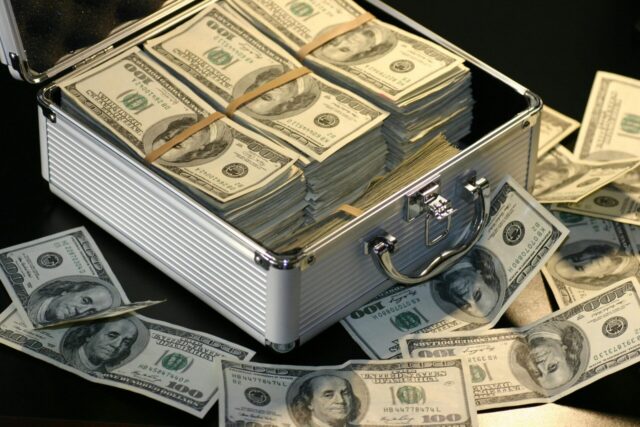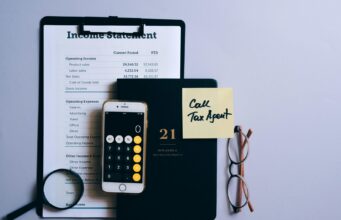
Picking up where we left off, the reason why there are very few millionaires is actually quite simple: overconfidence, cash flow and of course lifestyle inflation. Those three items all relate to one another but are difficult to see since they creep in over time. In fact, we can wager every single person on this blog knows of “someone” who is roughly on the path outlined in the previous post. Yet. By the time everyone is 40… Almost none of them are actually financially well off! Why is that? Well you’ll see why in this post.
Over Confidence: The tricky thing about those formulas that say “save 50% of your money and you’ll retire in 17 years?”… it assumes your spending never moves. These percentage type numbers don’t do a good job accounting for lifestyle inflation and other likely factors in your life. The vast majority will end up having kids. The vast majority will increase their spending from age 20 to age 40. The vast majority will not be able to save 50% on day one.
For fun we can work backward on this topic. If we assume that you want to spend $100,000 a year for life, it means that you would need to save $100,000 per year for 17 years straight. On a post Tax basis. Since this number is not viable for the majority, we can go ahead and use $60,000 to prove the same point.
If your lifestyle would be amazing with $5,000 a month, it means you probably need to make $200K per year for 17 years straight. This is a rough estimate as the post tax earnings at $200K is actually only $135K (using New York to Keep it simple). It allows you to spend $6,250 per month. And. It gets more complicated than that. We assumed the following: 1) no job loss, 2) no income loss, 3) no lifestyle inflation and 4) no one time financial issues. The reality is that at least two of these things will go wrong, if you read the prior post our money is on the side hustle job loss versus the career job loss (since there is more volatility).
Now the final warning piece when it comes to overconfidence… Run the numbers. No matter what you absolutely must run the numbers. If you get a sudden windfall of $50,000 and decide to use it for something like a nice car, you better be sure that it’s worth a full working year of your life. The cost of overconfidence should be measured in years of work, not dollars received (when you’re officially rich you can avoid this calculation since it becomes irrelevant). To conclude this point we would also take the time to work backward. If you were earning say $100,000 and saved $30,000 per year. Then you have a banner year and make $250,000… If you save the difference ($150,000), you actually gained 5 years of working effort. The measurement is based on the fact that you were only putting away $30,000 before and there is no guarantee that this insanely hot economy continues to run.
Cash Flow Issues: As stated in the prior post this was a big mistake we made and would reverse if we could. While we lucked out and the returns were fine, generally speaking you’ll want to prefer cash flows once you get over your “net worth number” needed. If we think about this it explains why a lot of people who are on the right track suddenly fall off. Those fixed cost payments hurt immensely in downswings. A home is easily the best example of this.
While your average person says “you’re losing money to rent”… You still have to live somewhere. So the real goal (until rich) is to keep your “living cost” as low as possible. Once you’re officially rich you can go all out and buy anything you like. But. Until then, view the buy/rent debate as a cash flow issue. Even if you miss out on some property appreciation, you also missed out on all of the risk associated with owning the home in the first place. The only time it’ll make sense for you, is if you can put down 25% or so and the post tax money (after deductions etc.) is equal to your current rent. This is a classic way to game the system from a financial leverage perspective. You’re spending the same amount of money each month but now you’re actually making small amounts of gains as the equity ticks up over time.
The second cash flow issue is the volatility in your earnings. If you have never been fired or laid off in your entire life, that trend is eventually going to reverse. Run the math quickly. The typical person who appears to be living right is actually increasing their expenses and likely saves around 20-25% a year. If you lose income for just 6 months, you’ve gone into a -20-25% situation. A job/career transition of just 6 months sets you back a full two years. Please read that again. A single 6 month transition period sets you back a full two years as you lose one full year of savings and on top of that you didn’t make any progress in that specific year.
Now the classic rebuttal is that the person could always “cut” their spending to make this temporary transition less painful… But… We’d argue that it is likely that you’ll be forced to take a position that pays less. Think about it like this. Even good performers can get laid off/fired and if that person is toward the higher end of the pay scale due to performance, they are going to have to accept a position that “restarts” their standing at a new firm. For those that have worked for several years, they know it is naive to believe that “high performance” guarantees job/career security. It doesn’t.
Classic Lifestyle Inflation: One of the key messages from this blog is that staying in shape and learning how to dress are incredibly important. Why? Well it actually relates to lifestyle inflation. If you’re in great shape and know how to dress well, the expectations for your earnings are actually lower. This is why you see a lot of extremely fit guys with decent looking girlfriends but a lighter bank account. It is also why the “lifestyle inflation bug” hits unattractive men the most (they have to spend more to compensate for being less attractive). Also. An unfortunate fact of life is that momentum carries itself so if someone is forced to overcompensate, it usually requires longer hours of work (making it difficult to reverse this spiral).
Now that we know how this impacts a lot of people, where does it surface? It surfaces in the following areas: private school tuition for people who have families, expensive cars that decline in value, over levering on a home, expensive watches/clothing and of course, more expensive dates. To be clear, we’re fine with spending on every single thing in the prior sentence. If you’re rich, go ahead and buy a huge house, a yacht and that private jet. The problem only arises when your savings rate suddenly declines significantly. Until you’re officially rich, decreasing the percentage invested causes you to work backward in time and increases the risk of sudden losses (lose your business or career and you’re going negative in a hurry). This trap is exactly why the number of millionaires is so small and yet a lot of people do earn top 1% income for a small period of time.
Summary of the Big Three Mistakes: Becoming over confident in earnings for a couple of years which allows you to save more dollars but does not actually improve your savings rate. For example if you continue to increase earnings by $50,000 but then spend $50,000 you’re actually worse off since your fixed costs have increased opening you up for financial downside (if you lose your income). The second issue is not doing correct cash flow calculations on your fixed costs to encapsulate the true value of each income stream. The reality is that larger income streams (especially when employed) are also the ones most susceptible to going away quickly. Finally, if you’ve been smart, you’ll avoid lifestyle inflation until making it since your physical fitness and general personality/style should already offset the need to spend large amounts of money. Don’t tell the tech nerds about this though.
Now Back to the Money Part: Assuming you’ve gotten this far you’re now learning the game relatively quickly. You’re now making decisions regarding time and opportunity cost. Back in our first post we explained that many individuals do not like to give up control so they end up raising prices on the products/services they offer as their secondary income. If you’re sharp you’ll eventually find someone to do these tasks at a smaller rate (be it 50%-90%, we don’t know your market) which then frees up even more time. You know what to do. As your time frees up in exchange for a slight decrease in cash flow, you should find another stream of income that *increases* your opportunity cost.
Since we’re going back to the basics we’ll use a simple example. You work as an accountant making $75,000 per year. A solid income, it’s stable and the job comes easily to you. In addition, you learned a skill (lets go with graphic design), that leads to $40,000 a year of extra income. This unfortunately is the most you’re able to do given time constraints and you want to work on yet another project (say website design as well). Instead of killing this $40,000 stream, you find ways to optimize it by outsourcing part of the process (for example going back and forth on the basic design concept). This cuts your workload in half but only costs say $15,000. Now you’re making “less” at $100,000 a year instead of $115,000… But… you have now regained your time. This results in a new website design income. You use your graphics design references to help drum up interest in your new P&L item and unsurprisingly you make $40,000 more through this new venture… It’s obvious but we’ll spell it out… Now you can find ways to 1) train someone to work for you and scale, 2) find ways to outsource and free up time, 3) create templates that automate a large portion of the process – hint this one is done by every single major company for a reason and 4) ramp up marketing to increase the sales/lead funnel.
Optimization: At this point you’re now playing a game of optimization. Don’t take it too seriously, you already did all of the serious hard work. You’ve created multiple cash flows, lived well below your means to show money the respect it deserves and didn’t fall into the three biggest wealth destroying traps. At this point when you look back at your original calculations you’re probably tracking to “financial independence” at around the late thirties. At that point you realize… if you just turn those side businesses into something organizable to be sold in the future… You’d be done 5 years faster. Once that last item kicks in you’ll get a taste of real freedom which forces other people to adapt to your schedule (its a fun change!).
















